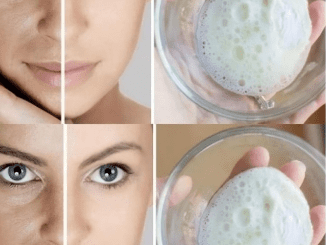
Understanding What a White Tongue Is
A white tongue is more common than you might think. Sometimes, it’s just a temporary buildup that disappears after brushing your teeth. Other times, it’s a sign of something more serious. This condition can cover the entire tongue, appear in patches, or create a spotted look. You may also notice an unpleasant smell, a strange taste, and a dry feeling in your mouth.
What looks like tiny white hairs on the tongue are actually taste buds covered in bacteria, food particles, and dead cells. The white coating can range from light to thick and may even appear yellowish. While it often resolves in a few days, if the problem persists for weeks or causes pain when eating or speaking, it’s best to consult a doctor.
What Tongue Color Can Reveal About Your Health
A healthy tongue should be pink, but changes in color can signal underlying health issues. A brown tongue may mean excessive coffee or tea consumption, while a yellow tongue can point to liver problems. A bright red tongue often indicates a vitamin B deficiency. Recognizing these changes can help you address potential health concerns early.
Why the Tongue Turns White
The most common cause of a white tongue is the buildup of bacteria, food particles, and dead cells trapped between enlarged or inflamed taste buds. These patches can appear after illness, dehydration, or even stress.
In rarer cases, the white coating is linked to conditions like geographic tongue — where smooth, irregular patches form and shift over time — often triggered by irritating foods, hormonal changes, or illness.
Video : Do You Have A White Coat On Your Tongue?
Common Risk Factors for a White Tongue
Several factors increase the likelihood of developing a white coating:
- Age – Older adults may experience more buildup.
- Antibiotic use – Can lead to fungal infections like oral thrush.
- Poor diet – Lacking fruits, vegetables, vitamin B12, and iron.
- Weak immune system – Increases infection risk.
- Poor oral hygiene – Allows bacteria to thrive.
- Dental devices – Ill-fitting prosthetics can irritate the tongue.
- Dehydration – Dry mouth encourages plaque formation.
One of the most common causes is oral thrush (candidiasis) — a fungal infection caused by an overgrowth of Candida yeast. This condition often creates creamy white lesions, redness, and soreness, and can make swallowing difficult. Those with weakened immunity, diabetes, or who use corticosteroids or antibiotics are at greater risk. Treatment typically involves antifungal medications, alongside good oral hygiene to prevent recurrence.
Tongue Piercings and White Coating
After a tongue piercing, it’s normal to notice a temporary white film. This happens because bacterial activity increases during the healing process. Using an antibacterial mouthwash can help. You might also see a ring around the piercing site — this is part of normal tissue healing.
If the white coating is due to injury or piercing, it usually resolves within about 10–14 days. Avoid irritants like spicy, acidic, or hot foods while the tongue heals.
How to Get Rid of a White Tongue at Home
While professional diagnosis is essential for persistent cases, many mild cases can improve with simple home care:
- Maintain excellent oral hygiene.
- Drink plenty of water to keep your mouth hydrated.
- Brush your tongue gently with a soft toothbrush or use a tongue scraper.
- Choose a mild fluoride toothpaste without sodium lauryl sulfate.
- Rinse with a fluoride mouthwash.
- Use a straw for cold drinks to reduce irritation.
- Avoid spicy, salty, acidic, or overly hot foods and drinks.
When to Seek Professional Help
If your white tongue lasts more than two weeks, causes pain, or comes with other symptoms like fever, difficulty swallowing, or unexplained weight loss, see a healthcare professional.
- Dentist – Can help remove buildup, address dental issues, and prescribe medication if needed.
- General Practitioner – Can investigate underlying causes, prescribe antifungal or antibacterial treatments, and refer you to a specialist if necessary.
Video : 11 Natural Treatments for White Tongue
Conclusion: Don’t Ignore Your Tongue’s Warning Signs
A white tongue isn’t always a cause for alarm, but it’s a visible sign your mouth — and possibly your overall health — needs attention. From dehydration to fungal infections, the causes vary widely. Good oral hygiene, a balanced diet, and staying hydrated are your first lines of defense. And if symptoms linger or worsen, getting professional advice ensures you address the problem before it develops into something more serious.


